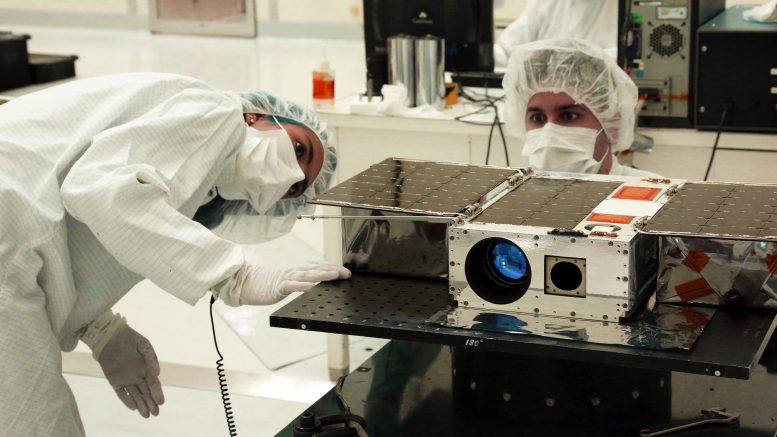Sci Tech Daily By NASA's Jet Propulsion Laboratory January 4, 2020
NASA Lost Contact With Spacecraft Designed to Study Planets Outside Our Solar System
Mission operators at NASA’s Jet Propulsion Laboratory in Pasadena, California, have lost contact with the ASTERIA satellite, a briefcase-sized spacecraft designed to study planets outside our solar system. The last successful communication with ASTERIA, short for Arcsecond Space Telescope Enabling Research in Astrophysics, was on December 5, 2019; attempts to contact it are expected to continue into March 2020.
ASTERIA belongs to a category of satellites called CubeSats, which vary in size but are typically smaller than a suitcase. Deployed into Earth orbit from the space station on November 20, 2017, the technology demonstration mission showed that many technologies necessary for studying and potentially finding exoplanets (planets orbiting stars other than our Sun) can be shrunk to fit on small satellites. Long-term, the mission aimed to show that small satellites could one day be used to assist larger exoplanet missions, such as NASA’s Transiting Exoplanet Satellite Survey (TESS).
ASTERIA observed a handful of nearby stars and successfully demonstrated that it could achieve precision measurements of the stars’ brightness. With that data, scientists look for dips in a star’s light that would indicate an orbiting planet passing between the satellite and the star. (This planet-hunting technique is called the transit method.) Mission data is still being analyzed to confirm whether ASTERIA spotted any distant worlds.
More:
https://scitechdaily.com/nasa-lost-contact-with-spacecraft-designed-to-study-planets-outside-our-solar-system/
Left to right: Electrical Test Engineer Esha Murty and Integration and Test Lead Cody Colley
prepare the ASTERIA spacecraft for mass-properties measurements in April 2017 prior to
spacecraft delivery ahead of launch. ASTERIA was deployed from the International Space
Station in November 2017. Credit: NASA/JPL-Caltech